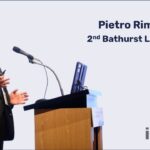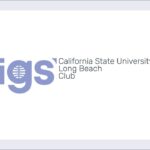
The Italian Chapter of the IGS, known as AGI-IGS, has been active for nearly three decades. As members prepare for the prestigious 12th International Conference on Geosynthetics in Rome next year, Chapter President Daniele Cazzuffi gave us an insight into the busy group.
When was the Italian chapter formed?
AGI-IGS was founded in 1993 at the General Assembly of the Italian Geotechnical Society (AGI) held in Rimini, Northern Italy, during the XVIII Italian Conference on Geotechnics. The Italian Chapter is part of the Italian Geotechnical Society (https://associazionegeotecnica.it/); our headquarters are in Rome in the same building as AGI, with the same Secretariat and Treasurer.
How is your board organized?
The board of AGI-IGS is composed of 11 members; one delegate from the Italian Geotechnical Society AGI, six elected delegates among AGI-IGS members, the Italian members of the IGS Council and the AGI Treasurer. Among the different members of the board, there is a good balance among manufacturers, academics and professionals, a perfect recipe to work well together!
The board meets six to eight times a year, alternatively in Milan and Rome. In 2020, due to the pandemic, online meetings took place monthly from March.

Tell us a bit about your membership.
The Italian Chapter has about 100 Individual members and a dozen corporate members. The majority of our corporate members are manufacturers of nonwoven needle-punched geotextiles, but there is also one manufacturer of geogrids, geonets and drainage geocomposites, one of geocomposite clay liners and one of polymeric geomembranes, plus some companies active in commercial and technical services.
Is the Italian geosynthetics industry concentrated in particular regions?
Yes, in three regions: the areas around Milan in Lombardy, Vicenza and Venice in Veneto, and also in Tuscany.
Tell us a bit about the geosynthetics market in Italy. What is the level of understanding and adoption of geosynthetics?
Geotechnical activities in Italy are spread over a large number of decision-makers, from single designers to national agencies, like the ones taking care of the main infrastructures such as roadways, railways, flood and riverbank protections, maritime structures and harbors.
Notwithstanding a very active production and manufacturing system, know-how about the correct use of geosynthetics is not very well distributed. Teaching is still limited to relatively few university centers, mainly thanks to the personal interest of some professors.
Specifications are not always in line with the latest developments in technology and even by international standards. Sustainability initiatives are sometimes carried out by younger professionals but are yet to become the norm for more established technical personnel.
And specifically, how is the geosynthetics market broken down in Italy?
The annual geosynthetics market in square meters is:
-
- Nonwoven geotextiles: 80,000,000
- Woven geotextiles: 3,000,000
- Geogrids: 3,000,000
- Geocomposites for drainage: 6,000,000
- Geomembranes: 8,000,000
- Geocomposite clay liners: 2,000,000
- Others: 3,000,000
What are the areas of opportunity?
The Italian territory is very varied, with 8,000 km of coastline and many mountains. It is tormented by earthquakes from more than 620,000 active landslides, with a high concentration of the population in small areas.
For these reasons, geosynthetics are vital for the Italian territory. The Italian Chapter of IGS can be very effective in playing its role in Italy.
What are the chapter’s key activities?
One of the key activities of the Chapter is the organization of the National Conference on Geosynthetics. The conference always takes place in Bologna in October as part of the major exhibition on construction in Italy, the SAIE.
Usually, the keynote lecture is given by a major international expert on geosynthetics engineering and has therefore seen members of the IGS speaking in front of Italian engineers, geologists, consultants and contractors.
In 2000, AGI-IGS, together with the Italian Geotechnical Society AGI, organized EuroGeo 2 in Bologna. The event attracted about 1,000 experts from around the world. The last day of EuroGeo 2 coincided with the first day of the huge SAIE exhibition on construction, thus allowing the participation of a lot of newcomers to geosynthetics engineering.
Wide participation is also one of the goals of the next 12th International Conference on Geosynthetics that will be held in Rome from September 18-22, 2022, similarly organized by AGI and AGI-IGS, with IGS endorsement.
What are the 12th ICG’s main aims?
The ambitious goal is to facilitate greater involvement of professionals, civil and environmental engineers and geologists not very familiar with the IGS and the subjects related to geotextiles, geomembranes, related products and associated technologies.
Moreover, the conference and the related exhibition in Rome will be particularly focused on sustainability and the circular economy; the conference theme is ‘Geosynthetics: leading the way to a resilient planet’. You can find out more here.
Does your Chapter have a youth section? What initiatives/events do you have for younger members?
For the last 10 years, we have focused on young members of the AGI-IGS. For example, the board encouraged young professionals to contribute to the organization of the annual meeting of young geotechnical engineers, which takes place every year in a different town in Italy. This effort resulted in an increased number of contributions dedicated to geosynthetics engineering, now ranging from 15% to 20% of the total papers presented at this national conference on geotechnics.
Particular attention has also been devoted to encouraging specific initiatives on geosynthetics engineering in more general events, as in the various conferences dedicated to the environment, among which is the annual Ecomondo in Rimini in November, the most important green exhibition in Italy which usually attracts more than 120,000 visitors over four days.
Anything else you would like to add?
The Italian Chapter of IGS is only one of the organizations in which geosynthetics issues are discussed in Italy. Two further important bodies include the mirror committee of UNI (Italian Standardization Organization) to follow up the standards evolutions in CEN (European Committee for Standardization) and ISO (International Organization for Standardization), and the society AssINGeo (the Italian Association of Geosynthetics Manufacturers and Distributors www.assingeo.it). AssINGeo represents the main industrial bodies in the Italian market and operates in connection with the EAGM (European Association of Geosynthetic Product Manufacturers www.eagm.eu).
To find out more about the 12th ICG, visit the event website here.





















